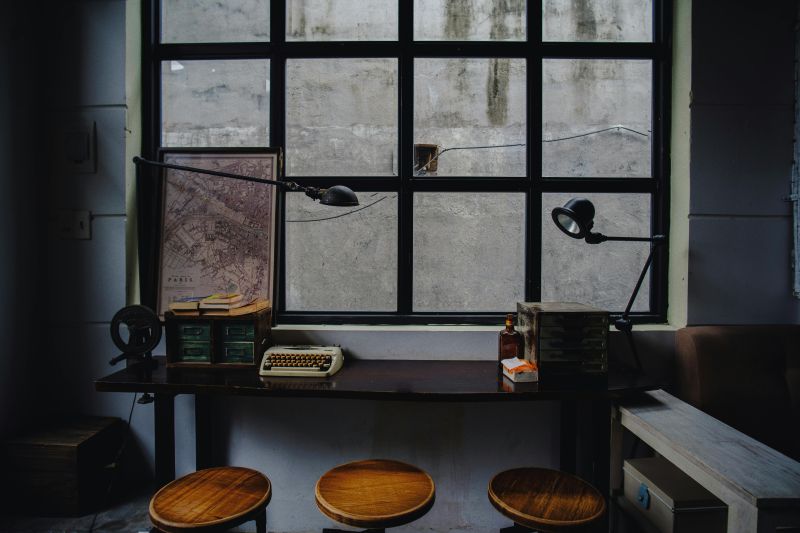In the digital age, where attention spans are shorter than ever, the layout of a website plays a pivotal role in influencing how users interact with content. A well-structured layout can subtly guide users toward desired actions, improve engagement, and ultimately drive conversions. Understanding how to use layout to guide user behavior is essential for businesses aiming to optimize their online presence and user experience.
FORMALLY KNOWN AS CYTNET, INC (2005 -2014)
Welcome to our company, where we specialize in graphic design and programming to help your brand or product stand out in the market and generate more business! With our dedicated team, we create amazing designs that are adapted to the latest trends and technology.
Over the years, we have worked with numerous large companies, including Moishes Moving, Deep Sea Cosmetics, American Van Lines, Yellow Key, and more. Our portfolio includes over 300 full custom websites and search engine marketing projects. We take pride in our ability to deliver high-quality results and provide excellent service to our clients.
Our main focus is on custom web development and search engine optimization. We understand the importance of having a responsive and professional website design that incorporates cutting-edge technology, quality, and innovation. Whether you need a corporate website, a content management system (CMS), or an e-commerce solution, we have the expertise to design and create countless websites of various types.
We work with the most efficient and popular platforms in the market, including WordPress, Shopify, WooCommerce, and Magento, among others. Our goal is to ensure that your website not only looks great but also functions seamlessly to enhance user experience and drive conversions.
“Users form an opinion about your website in approximately 50 milliseconds.” — Google Research
This statistic underscores the importance of layout in shaping user perception and behavior. A strategically designed layout can direct attention, reduce friction, and make navigation intuitive, all of which contribute to a positive user experience.
To effectively use layout to guide user behavior, it’s important to understand the psychological principles behind user interaction. Human behavior on websites is largely influenced by visual hierarchy, cognitive load, and the ease of navigation. By leveraging these principles, designers can create layouts that naturally lead users toward specific actions.
- Visual Hierarchy: One of the most powerful tools in layout design is visual hierarchy. This concept refers to the arrangement of elements in a way that signifies importance. Larger, bolder, or more colorful elements tend to draw attention first. For example, placing a bold call-to-action (CTA) button at the top of a page ensures it gets noticed. Similarly, using contrasting colors for key elements can make them stand out.
- Whitespace Utilization: Whitespace, or negative space, is the empty space between elements. While it may seem counterintuitive, whitespace actually enhances readability and focus. It allows users to process information more easily and prevents the layout from feeling cluttered. Strategic use of whitespace can guide the eye from one section to another, subtly directing user behavior.
- F-Pattern and Z-Pattern Layouts: Studies have shown that users often scan web pages in an F or Z pattern. The F-pattern is common on content-heavy pages, where users read horizontally across the top, then down the left side. The Z-pattern is more common on landing pages, where users scan in a zigzag motion. Designing layouts that align with these patterns can improve content visibility and engagement.
- Consistent Navigation: Navigation is a critical component of layout. Consistent, intuitive navigation helps users find what they’re looking for without frustration. Sticky headers, breadcrumb trails, and clearly labeled menus enhance usability. When users can navigate effortlessly, they’re more likely to stay on the site and complete desired actions.
- Strategic CTA Placement: Call-to-action buttons should be placed where users are most likely to see and interact with them. This often means positioning them above the fold, at the end of content sections, or after a compelling value proposition. The design of the CTA—color, size, text—should also align with the overall layout to ensure visibility and effectiveness.
- Responsive Design: With the increasing use of mobile devices, responsive design is no longer optional. A responsive layout adapts to different screen sizes, ensuring a seamless experience across devices. This not only improves usability but also affects search engine rankings, as mobile-friendliness is a ranking factor.
- Content Grouping: Grouping related content together helps users understand the structure of the page and find information quickly. This can be achieved through the use of cards, sections, or grids. Clear headings and subheadings also contribute to better content organization and readability.
- Use of Imagery and Icons: Visual elements like images and icons can enhance the layout by breaking up text and providing visual cues. Icons can guide users to important sections, while images can evoke emotions and reinforce messaging. However, it’s important to use visuals judiciously to avoid overwhelming the user.
- Typography and Readability: The choice of fonts, font sizes, and line spacing affects how easily users can read and comprehend content. A good layout uses typography to establish hierarchy and guide the reader’s eye. For example, using larger fonts for headings and smaller fonts for body text creates a clear distinction between sections.
- Loading Speed and Performance: A layout that looks great but loads slowly can frustrate users and lead to high bounce rates. Optimizing images, minimizing code, and using efficient hosting solutions are essential for maintaining performance. A fast-loading layout keeps users engaged and encourages them to explore further.
“A one-second delay in page load time can lead to a 7% reduction in conversions.” — Akamai
This highlights the importance of performance in layout design. Even the most beautifully designed layout will fail to guide user behavior if it’s hindered by slow load times.
Another key aspect of using layout to guide user behavior is understanding the user journey. Mapping out the typical paths users take on your site allows you to design layouts that support these journeys. For example, an e-commerce site might guide users from the homepage to product categories, then to individual product pages, and finally to the checkout. Each step should be clearly laid out and easy to navigate.
- Homepage Layout: The homepage serves as the entry point for many users. It should provide a clear overview of what the site offers and guide users to key areas. Featuring popular products, services, or blog posts can help direct traffic to high-value pages.
- Product Page Layout: On product pages, the layout should highlight key information such as product images, descriptions, pricing, and reviews. The “Add to Cart” button should be prominently displayed and easy to find. Including related products can also encourage further exploration.
- Checkout Layout: The checkout process should be streamlined and distraction-free. A clean, minimal layout with clear progress indicators can reduce cart abandonment. Offering multiple payment options and displaying trust signals (e.g., security badges) can also enhance user confidence.
“69% of online shopping carts are abandoned.” — Baymard Institute
Reducing friction in the layout of checkout pages can significantly improve conversion rates. Every element should be designed to reassure and guide the user toward completing the purchase.
Beyond e-commerce, layout plays a crucial role in content-driven websites. Blogs, news sites, and educational platforms rely on layout to keep users engaged and encourage deeper exploration.
- Blog Layout: A well-designed blog layout includes clear headings, subheadings, and a logical flow of content. Including a table of contents, related posts, and social sharing buttons can enhance usability and engagement. Highlighting key quotes or statistics in blockquotes can also draw attention to important information.
- Landing Page Layout: Landing pages are designed with a single goal in mind—usually to capture leads or drive conversions. The layout should be focused and free of distractions. A compelling headline, persuasive copy, and a strong CTA are essential components. Testimonials, trust badges, and benefit-oriented bullet points can also enhance credibility.
“Landing pages with videos can increase conversions by up to 80%.” — EyeView Digital
Incorporating multimedia elements into the layout can boost engagement and guide users toward desired actions.
To ensure that your layout effectively guides user behavior, it’s important to test and iterate. A/B testing different layouts, analyzing heatmaps, and gathering user feedback can provide valuable insights. Tools like Google Analytics, Hotjar, and Crazy Egg can help you understand how users interact with your site and identify areas for improvement.
- A/B Testing: This involves comparing two versions of a page to see which performs better. By testing different layouts, you can determine which elements are most effective at guiding user behavior.
- Heatmaps: Heatmaps show where users click, scroll, and spend time on a page. This data can reveal whether your layout is directing attention to the right areas.
- User Feedback: Surveys, usability tests, and feedback forms can provide qualitative insights into how users perceive and interact with your layout.
“Companies that use A/B testing are 58% more likely to see improvements in conversion rates.” — Econsultancy
Continuous optimization is key to maintaining an effective layout. As user preferences and technologies evolve, so too should your design strategies.
In conclusion, using layout to guide user behavior is both an art and a science. It requires a deep understanding of user psychology, design principles, and data analysis. By focusing on visual hierarchy, navigation, responsiveness, and performance, you can create layouts that not only look great but also drive meaningful user actions.
If you’re looking to enhance your website’s layout and improve user behavior, our team is here to help. With years of experience in custom web development and SEO, we specialize in creating designs that are both visually appealing and strategically effective. Whether you need a new website, an e-commerce solution, or a performance audit, we have the expertise to deliver results.
Explore our marketing services to see how we can help you grow your business online. Check out our latest insights on the blog, or get in touch via our contact page to start your project today.
Ready to transform your website and drive better results?
Call us at 954-621-2381 or visit our office to discuss your design and development needs.
Let’s build something amazing together.






